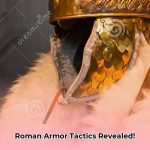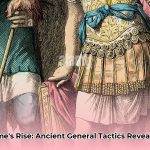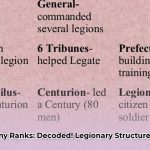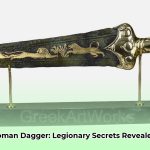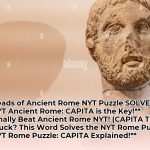Ever wondered how children entertained themselves in ancient Greece, a civilization renowned for its philosophers, warriors, and magnificent architecture? Beyond the grand temples and profound texts, ancient Greek children engaged in a vibrant world of play, using ingeniously crafted toys and enjoying spirited games. These aren’t just mere relics; they offer a profound glimpse into the daily lives, societal values, and educational practices of the time. From simple natural objects to elaborate creations, these playthings were essential tools for socialization, skill development, and instilling the cultural norms that shaped future citizens. Join us as we explore the fascinating world of ancient Greek childhood, revealing how ancient play mirrored and reinforced the very fabric of their society. Want to bring this history to life? See some great ancient Greek coloring pages.
Timeless Amusements: Ancient Greek Toys That Echo Today
Step back in time to discover some of the most captivating toys from ancient Greece. These artifacts, unearthed by archaeologists from sites like Athens, Corinth, and Thebes, reveal much about how children lived, what their families prized, and how they learned. These playthings, ranging from the earliest known yo-yos to sophisticated dolls, demonstrate a universal human need for play and connection across millennia.
Knucklebones: The Ancient Game of Skill and Chance
Imagine children gathering, not with digital screens, but with a handful of small bones. Knucklebones, known as “astragalus,” were typically sheep or goat ankle bones, though versions made from bronze or other materials have also been found. This game was immensely popular across all social strata, from the humblest homes to the most aristocratic.
Players would toss five bones, scoring points based on how they landed, each side bearing a different value. It was a test of dexterity, strategy, and a touch of luck, bearing a striking resemblance to modern games like jacks or dice. Knucklebones very likely aided in the development of fine motor skills, mathematical understanding, and social interaction, making it more than just a pastime but a subtle form of education.
Dolls (Plaggona): Preparing for Societal Roles
In ancient Greece, dolls, or “Plaggona,” were far more than simple entertainment. Crafted from diverse materials such as clay, rags, beeswax, and for the affluent, even ivory or glass, these dolls were meticulously handmade. Some, like those found in Corinth dating to the 5th century B.C., featured movable limbs, earning them the nickname “Daedalus” dolls, attributed to the mythical craftsman. Many were adorned with painted clothing or intricate hairstyles mirroring contemporary Greek beauty standards.
These dolls played a crucial educational role, familiarizing young girls with their future responsibilities as wives and mothers through role-playing. This practice reinforced prevailing gender roles, subtly guiding girls toward their destined place in society. The significance of Plaggona extended into religious rituals; on the eve of their weddings, young women would often dedicate their cherished dolls to goddesses like Artemis or Aphrodite. This act symbolized their transition from childhood to womanhood and underscored the doll’s deep connection to religious beliefs and rites of passage. Dolls with movable limbs were also sometimes found as burial objects in girls’ graves or as offerings in shrines.
Spinning Tops: Twirling Wonders of Antiquity
Simple yet endlessly fascinating, spinning tops brought joy to ancient Greek children and even young women, as depicted on ancient vases. Known as “strombos,” these toys have a history stretching back to prehistoric times, becoming particularly common from the Archaic period onward. Typically made of wood or clay, some were beautifully decorated with ivy leaves, hymns, or animal representations.
Ancient Greeks played with various types of tops. Some were “twirlers,” spun by hand using a stem, while others were “whipping tops,” set in motion with a small whip. This universal fascination with motion, balance, and kinetic play is evident across cultures and continues to captivate today. The widespread presence of spinning tops underscores their appeal as a simple, accessible form of entertainment that could provide hours of competitive or individual play.
Yo-Yos: The Plaything That Comes Back
Surprisingly, the yo-yo is not a modern invention. Evidence suggests a toy remarkably similar to today’s yo-yo was enjoyed in ancient Greece. While the exact ancient name of the toy remains unknown, it likely consisted of a circular disc, often made of wood or terracotta, with a string wound around its central shaft.
Players would skillfully throw the disc downwards, using a flick of the wrist to make it spin back up the string. The enduring appeal of the yo-yo across thousands of years highlights how certain fundamental play mechanics remain universally enjoyable and endlessly entertaining, transcending time and technological advancements.
Toy Animals on Wheels: Miniature Adventures
For young boys in ancient Greece, miniature toy animals on wheels offered a thrilling connection to the adult world of chariots and horses. Crafted from clay or wood, these pull-toys often depicted horses, buffaloes, or even pigs, attached to small carts on wheels.
These toys allowed boys to mimic and dream of future roles as warriors or skilled charioteers, providing a safe and imaginative outlet for adventurous play. An example from Athens, a horse with wheels from the 4th century B.C., shows how popular these toys were for boys who would drag them around their homes. The prevalence of such toys suggests a societal emphasis on skills like horsemanship and military prowess, reflecting the values boys were encouraged to embody.
Rattles: Soothing Sounds for Tiny Ears
Even the youngest members of ancient Greek society had their specially designed toys. Rattles, known as “Platagi,” were typically made of clay and were sometimes shaped like animals, such as pigs.
Beyond their practical use for soothing and entertaining babies, these ancient rattles held cultural beliefs. The “Platagi” was sometimes believed to possess protective qualities, thought to ward off evil spirits lurking around a child’s crib. Their widespread use, often depicted on ancient vases, signifies the importance placed on early childhood development and sensory stimulation in ancient Greece.
Hoops: Rolling into Fitness and Fun
The simple hoop was another popular and enduring toy in ancient Greece, engaging both children and adults in physical activity. Known as “trochus,” these hoops were often made of durable materials like bronze, iron, or copper.
Children would roll the hoop along the ground using a stick, making it a dynamic game that promoted physical coordination, speed, and agility. Beyond children’s play, hoop rolling was also practiced by men in palaestra (gymnasiums) as a form of athletic training, highlighting its dual role as both recreation and exercise. Vase paintings frequently depict boys engrossed in this active pastime, illustrating its widespread appeal and contribution to physical well-being.
Beyond Toys: Popular Ancient Greek Games
While distinct toys were cherished, ancient Greek children also engaged in a variety of games that fostered social interaction, skill, and strategic thinking.
Dice (Pessoi): Games of Chance
Dice, referred to as “pessoi,” were common in ancient Greece. Similar to modern dice, they were typically cubes with marked sides numbered one to six. Along with knucklebones, dice were integral to various board games and games of chance, often enjoyed by men as well as children. These games honed numerical skills and introduced concepts of probability.
Board Games (Checkers/Backgammon)
Ancient Greeks enjoyed board games that bear a striking resemblance to modern checkers or backgammon. These games involved a board, movable stones, and sometimes dice, requiring strategic thought and planning. Such intellectual games provided a counterbalance to physical activities, fostering cognitive development.
Ostrakinda: The Shell Game
A unique and engaging game was “Ostrakinda,” played with a shell. One side of the shell was painted black to represent “night,” while the other was left white for “day.” Children would divide into two teams, “night” or “day,” and the shell was tossed. Whichever team’s color landed face up would then chase the opposing team. This simple game encouraged teamwork, quick reflexes, and outdoor play.
Ancient Greek Playthings: A Comprehensive Overview
Here’s a detailed summary of these fascinating playthings and games that were crucial for ancient Greek children:
| Toy/Game | What it Was | Why it Mattered | Common Materials | Locations/Eras Noted |
|---|---|---|---|---|
| Knucklebones | Sheep/goat ankle bones (astragalus) used as dice | Taught chance, skill, dexterity; accessible to all social classes; may have aided counting and strategic thinking. Resembled modern jacks. | Bone (sheep/goat), Bronze | Widespread, common across all social groups. |
| Dolls (Plaggona) | Clay, rag, wax, ivory, or glass figures | Prepared girls for future roles as wives and mothers; helped them embody societal expectations; dedicated to goddesses (Artemis, Aphrodite) at wedding; found as burial objects in girls’ graves. Movable limbs (Daedalus dolls) suggest advanced craftsmanship and play. | Clay, Rags, Wax, Ivory, Glass | Corinth (5th century B.C. for movable limbs), Athens. Often found in National Archaeological Museum. |
| Spinning Tops | Wooden or clay spinning toys (strombos) | Timeless fun, appeared in vase art; universal fascination with motion and balance; types included twirlers and whipping tops; popular from Archaic times. Sometimes decorated with ivy leaves, hymns, or animals. | Wood, Clay | Thebes (Kaverio of Thebes, 5th century B.C.), widespread since prehistoric times. |
| Yo-Yos | Discs on a string | Showed that simple, engaging concepts can entertain for ages; an early precursor to the modern yo-yo. Ancient name unknown. | Wood, Terracotta | Thebes (Kaverio of Thebes, 425-400 B.C.), widespread. |
| Toy Animals on Wheels | Miniature carts pulled by animals | Allowed boys to mimic adult roles (e.g., charioteers, warriors) and dream big; reflected importance of animals and transportation; provided early imaginative play. | Clay, Wood | Athens (4th century B.C.), common. |
| Rattles (Platagi) | Instruments designed to make soothing sounds | Soothed babies and stimulated their senses; believed to ward off evil spirits; came in various forms, including animal shapes (e.g., dogs, pigs). | Clay, Various materials | Athens (3rd century B.C. for rattle dog), widespread. |
| Hoops (Trochus) | Round circles pushed with a stick | Promoted physical activity, coordination, and healthy competition; used by children and as training for men in palaestra. Appeared in pottery depictions. | Wood, Bronze, Iron, Copper | Widespread, common in art depictions. |
| Dice (Pessoi) | Cubes with marked sides, numbered one to six | Used in board games and games of chance; taught basic numerics and probability; enjoyed by men and children for entertainment and competition. | Bone, Stone, Clay | Widespread. |
| Board Games | Strategic games involving boards, stones, and dice | Enhanced strategic thinking and planning; early versions resembled modern checkers or backgammon. | Wood, Stone, Clay | Widespread. |
| Ostrakinda | Shell game (black/white sides) for chase teams | Promoted teamwork and quick reflexes; an outdoor game involving physical activity and strategy. | Shell (painted) | Widespread, as a common outdoor game. |
These ancient Greek toys and games provide us with an invaluable window into the everyday lives of children in classical civilization. They were more than simple diversions; they were fundamental tools for learning, socializing, and preparing for the future.
Core Insights from Ancient Greek Play
The study of ancient Greek playthings offers profound insights into the society that created them:
- Socialization and Gender Roles: Ancient Greek children’s play was intrinsically linked to their future societal roles. Dolls, for instance, were instrumental in acculturating girls into specific female responsibilities, while toy chariots and animals on wheels prepared boys for roles involving physical prowess or military engagement.
- Universal Need for Play: The widespread use of diverse toys, from simple knucklebones accessible to all, to more elaborate crafted items, highlights a universal human necessity for play, learning, and self-expression that transcends socio-economic boundaries. However, crucial evidence indicates that children from elite families had a far greater assortment of toys and leisure time compared to those from poorer households, who were expected to contribute to family labor from a very young age, often having little to no childhood dedicated to play. This stark contrast underscores significant social stratification.
- Cultural and Religious Significance: Toys served as important cultural artifacts, reflecting not only daily life but also religious practices. The dedication of dolls to goddesses like Artemis upon marriage signifies their profound connection to rites of passage and spiritual beliefs. Games like hoop rolling even extended into physical training for adults, blurring the lines between play and societal development.
- Early Innovations: Many common toys we know today, such as the yo-yo, spinning tops, rattles, and jointed dolls, have direct or similar counterparts in ancient Greece, establishing them as pioneers in toy design.
Modern toy designers, educators, and parents can draw immense inspiration from these ancient innovations, fostering creativity, physical activity, and historical understanding through play. Museum exhibits increasingly feature replicas of ancient Greek toys, particularly Plaggona dolls, to illuminate ancient Greek society and its focus on childhood development. Our ancestors intuitively understood that play was not merely about passing the time; it was about learning, experimenting, and assiduously preparing for the world ahead.
Ancient Play, Modern Application: Actionable Steps
How can we, in the modern world, apply the lessons learned from ancient Greek toys and games?
| Ancient Toy/Game Type | Modern Application & Educational Value |
|---|---|
| Spinning Tops | Integrate into STEM (Science, Technology, Engineering, Mathematics) education to teach fundamental physics principles such as rotation, friction, and balance. They can also be used as therapeutic tools for focus and fine motor skill development. |
| Toy Animals on Wheels | Encourage imaginative play and storytelling, allowing children to explore various societal roles and historical contexts. Modern toy vehicles continue to fuel creativity, teach about movement, and introduce basic mechanics. |
| Dolls (Plaggona) | Utilize as tools for exploring diverse cultural roles, sparking imaginative narratives, and fostering empathy. Museums and cultural heritage organizations can create special displays highlighting the historical and cultural significance of dolls across different civilizations to promote cultural understanding. |
| Knucklebones & Hoops | Promote physical activity, coordination, and healthy competition through traditional games. Teach fundamental motor skills and the joy of active, outdoor play, reminding us that some forms of play are deeply embedded in our collective human history. |
| Board Games & Dice | Reinforce strategic thinking, problem-solving, and basic mathematical concepts. These games provide a structured environment for cognitive development and social interaction, demonstrating the enduring appeal of mental challenges. |
| Historical Replicas | Develop and market historically accurate toy replicas for educational purposes, allowing children to physically engage with the past and gain a tangible understanding of ancient civilizations. Collaborations between toy manufacturers and archaeologists can bring history to life. |
By re-examining these ancient amusements, we can rediscover valuable principles of child development and education that remain relevant in our fast-paced modern world, fostering a deeper connection to our shared human history through the simple, yet profound, act of play.







